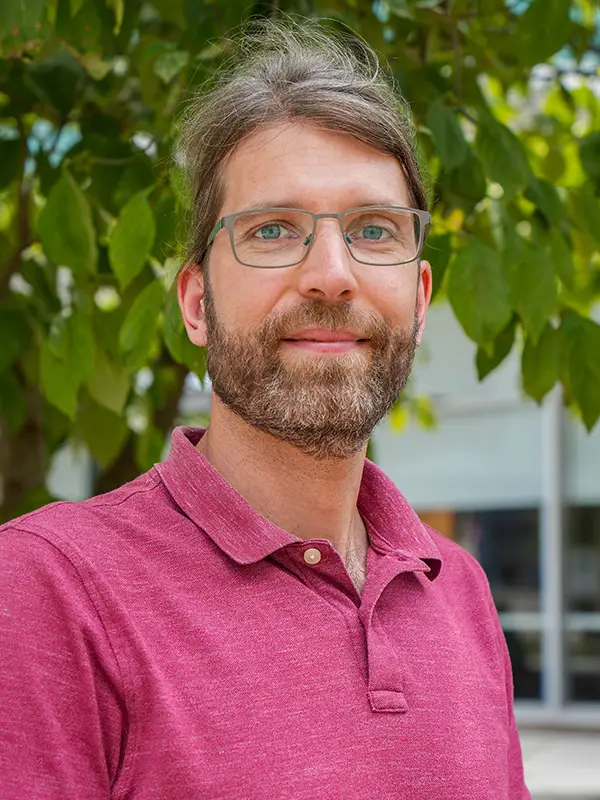Martin F. Engelke

ADDRESS
Mossman 510
Address Lab
Mossman 541C
Website
Phone
Research Areas
- Biochemistry
- Molecular Biology
- Cellular Biology
- Physiology
Martin F. Engelke
Assistant Professor, BCMB
Research Statement
Research in the Engelke laboratory focuses on the mechanisms that regulate kinesin motor proteins in mammalian cells and understanding the function of these motors in cilia. For this, we are using an integrated approach that combines cell biology, genetics approaches, fluorescence microscopy, and computational analysis. More information can be found on the lab website.
Selected Publications
- Adams, J. M., Sawe, C., Rogers, S., Reid, J., Dasari, R., & Engelke, M. F. (2024). Characterization of the disease-causing mechanism of KIF3B mutations from ciliopathy patients. Frontiers in Molecular Biosciences, 11. https://doi.org/10.3389/fmolb.2024.1327963
- Fasawe, A. S., Adams, J. M., & Engelke, M. F. (2024). KIF3A tail domain phosphorylation is not required for ciliogenesis in mouse embryonic fibroblasts. iScience, 27(3), 109149. https://doi.org/10.1016/j.isci.2024.109149
- Engelke, M. F., Waas, B., Kearns, S. E., Suber, A., Boss, A., Allen, B. L., & Verhey, K. J. (2019). Acute Inhibition of Heterotrimeric Kinesin-2 Function Reveals Mechanisms of Intraflagellar Transport in Mammalian Cilia. Current Biology, 29(7), 1137-1148.e4. https://doi.org/10.1016/j.cub.2019.02.043
- Engelke, M. F., Winding, M., Yue, Y., Shastry, S., Teloni, F., Reddy, S., Blasius, T. L., Soppina, P., Hancock, W. O., Gelfand, V. I., & Verhey, K. J. (2016). Engineered kinesin motor proteins amenable to small-molecule inhibition. Nature Communications, 7(1), 11159. https://doi.org/10.1038/ncomms11159
- Engelke, M. F., Burckhardt, C. J., Morf, M. K., & Greber, U. F. (2011). The Dynactin Complex Enhances the Speed of Microtubule-Dependent Motions of Adenovirus Both Towards and Away from the Nucleus. Viruses, 3(3), 233–253. https://doi.org/10.3390/v3030233
- Strunze, S., Engelke, M. F.*, Wang, I. H., Puntener, D., Boucke, K., Schleich, S., Way, M., Schoenenberger, P., Burckhardt, C. J., & Greber, U. F. (2011). Kinesin-1-mediated capsid disassembly and disruption of the nuclear pore complex promote virus infection. Cell Host Microbe, 10(3), 210–223. https://doi.org/10.1016/j.chom.2011.08.010 *equal contribution